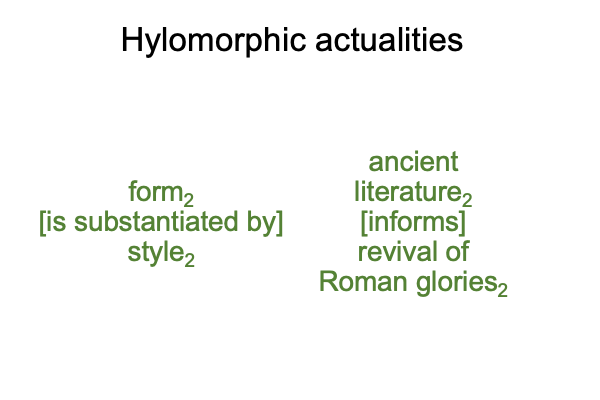0023 The Renaissance program sets the humanities against Aristotle’s logic and naturalism. It undermines the union of philosophy and scholastic theology.
Poetry gains attention.
Logic is neglected.
Before: Philosophy (including logic) stands as a handmaiden to theology, the queen of the sciences.
After: Poetry is the transcendent queen of the arts.
0024 Of course, I speak allegorically.
According to Redpath, the humanist ascent of allegory has historic precedent. Allegory appears in Hesiod’s attack on Homer’s veracity, the Ionians critique of mythological reasoning, and Plato’s interpretations of epic poetry. Then, allegory is used to counter-attack, arguing for the truth of Homer, myths and epics. The truth is found, not in fact, but in fiction. The truth is concealed within a rhetorical facade. By the time of Augustine, rhetorician and philosopher are one and the same.
0025 I pause and ask myself, “What on Earth is allegory?”
Allegory is a technique, characteristic of our current Lebenswelt (and perhaps, the Lebenswelt that we evolved in), whereby symbols associate to concrete or material forms.
For Renaissance humanists, the forms are literary. The symbols are political.
Style becomes matter. Symbols of the glory of Rome are matter, and ancient literary works are the corresponding forms.
On the one hand, matter [substantiates] form. On the other hand, form [informs] matter.
Now, style [substantiates] form. Form [informs] style.
What is [informs]?
[To inform] is [to be substantiated by].
0026 Here is a comparison.

